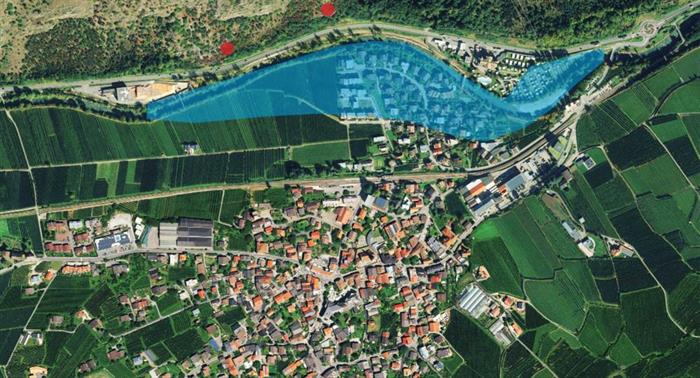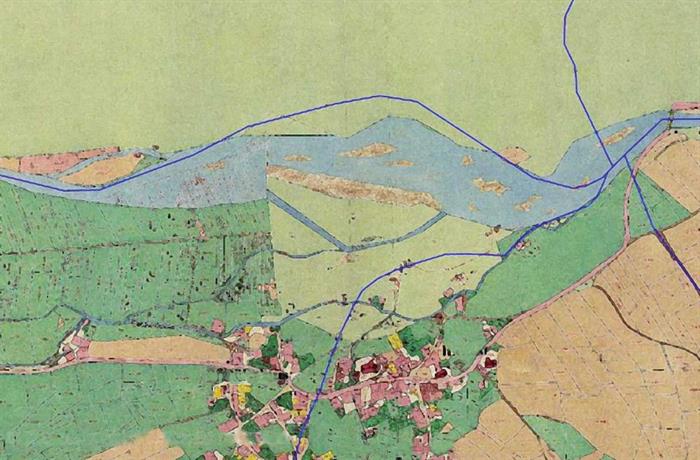La storia del reperto // The history of the find
Nel 2007 Walter Tscholl, un pediatra da anni interessato di archeologia, ha scoperto ossa e ceramica in un cantiere presso la strada statale di Laces. In accordo con l’Ufficio Beni archeologici Walter Tscholl ha controllato il cantiere per diversi giorni. L'ispezione del luogo e i successivi scavi archeologici dell’Ufficio Beni archeologici hanno portato alla luce un insediamento e un cimitero. Secondo l’archeologo Hubert Steiner sono stati trovati resti di un insediamento nonché features di tomba. I reperti più antichi risalgono indubbiamente all’età del rame, mentre quelli più giovani risalgono alla prima età del bronzo (ca. dal 3.500 al 1.700 a. C.). Inoltre sono state scoperte tombe ad inumazione dell’età del ferro.
Walter Tscholl, a pediatrician who has been interested in archaeology for years, discovered bones and ceramics at a construction site near the state road in Laces in 2007. He monitored the site for several days in consultation with the Department for Archaeological Monuments. During an on-site inspection and the subsequent excavations of the Department for Archaeological Monuments a settlement and a cemetery were discovered and examined. According to the archaeologist Hubert Steiner settlement remains as well as grave features came to light. The oldest finds undoubtedly date back to the Copper Age, the youngest to the Early Bronze Age (app. from 3,500 to 1,700 BC). Inhumation graves from the Iron Age were discovered as well.

Il paese di Laces oggi con lago preistorico e siti archeologici. // The village of Laces today with prehistoric lake and archaeological sites.
L'insediamento al Monte Sole di Laces dell’età del rame e della prima età del bronzo // The settlement at the Sun Mountain of Laces from the Copper Age and the Early Bronze Age
Probabilmente l‘insediamento scoperto si è esteso a monte fino alle rocce imponenti. Reperti di un focolaio e di residui di argilla indicano un insediamento permanente. Ulteriori indicazioni in questa direzione sono reperti di ossa di animali, parti di vasi di ceramica e oggetti in selce e un’ascia di pietra. Una grande quantità di schegge di selce fanno pensare che gli oggetti siano stati prodotti sul posto. L‘insediamento ha garantito un certo livello di sicurezza agli abitanti che vi abitavano dall’età del rame. Il fondovalle era un paesaggio fluviale. Il corso del fiume Adige variava. L‘insediamento si trovava un po’ più in alto al bordo della valle.
The discovered settlement probably extended up the mountain to the towering rocks. The find of a hearth and of rests of daub indicates a permanent settlement. Other indications are finds of animal bones, parts of pottery vessels and flint objects and a stone axe. The large number of flint flakes particularly suggests that these objects were produced on the spot. The settlement offered a certain level of security to the settlers resident since the Copper Age. The valley floor was a wetland. The course of the Adige river varied. The settlement was situated a bit higher at the edge of the valley.
Vita all'acqua // Life at the water
Il profilo stratigrafico dimostra che l‘insediamento si trovava nelle immediate vicinanze di un fiume o vasto paesaggio fluviale-lacustre. L’estesa conoide alluvionale, dove oggi si trova il paese di Laces, ha più volte bloccato il corso del fiume Adige, portando a un ristagno del fiume che dopo qualche tempo ha cercato un nuovo sbocco e rotto la barriera. Le conseguenze erano ripetute alluvioni dell‘insediamento e inondazioni del vicino fiume.
The layer profile showed that the settlement was situated in immediate proximity to the river or a large lake and river landscape. The large alluvial fan where the village of Laces is situated today blocked the course of the Adige river again and again. This led to river backflooding so that the river needed a new outflow and breached the barrier. The settlement was thus repeatedly ravaged by floods and inundations of the river nearby.

Il ristagno del fiume Adige presso Laces nel 1858. // The Adige river was still dammed up to a lake near Laces in 1858.
Chi erano gli abitanti di Laces? // Who were the settlers from Laces?
Già la scoperta del menhir di Laces non lascia nessun dubbio che un dominante gruppo di abitanti risiedeva a Laces nell’età del rame. L’insediamento dell’età del rame ha anche persistito nella prima età del bronzo, il che rappresenta una singolarità in Alto Adige. Un fattore determinante deve essere stato la posizione nella valle principale e quindi il controllo dello scambio e commercio “internazionale”. In contesto con l’insediamento dell’età del bronzo bisogna anche menzionare il pugnale di Martello dello stesso periodo. In questo periodo il pugnale appare in tutta l’Europa nella categoria sociale più alta. Rappresenta le nuove capacità tecniche della fusione di bronzo nella sua perfezione. L’insegna del ceto alto nell’età del rame rimane il pugnale. Secondo Hubert Steiner per questo possiamo presumere che l’insediamento e il cimitero di Laces si riferiscano a una fascia di popolazione socialmente dominante.
The discovery of the Laces menhir left no doubt that a dominant settler group lived in Laces in the Copper Age. The Copper Age settlement continued in the Early Bronze Age, which is unique in South Tyrol. A critical factor must have been the location in the main valley and thus the control of the „international“ exchange and trade. The Martello dagger from the same period has to be mentioned in connection with the Bronze Age settlement as well. The dagger is present all around Europe in the highest social category during this period. It represents the new technical expertise of bronze casting in its perfection. The insignium of the upper class in the Copper Age was the dagger. According to Hubert Steiner this is why there are certain indications that the settlement and the tombs in Laces refer to a socially dominant class of society.